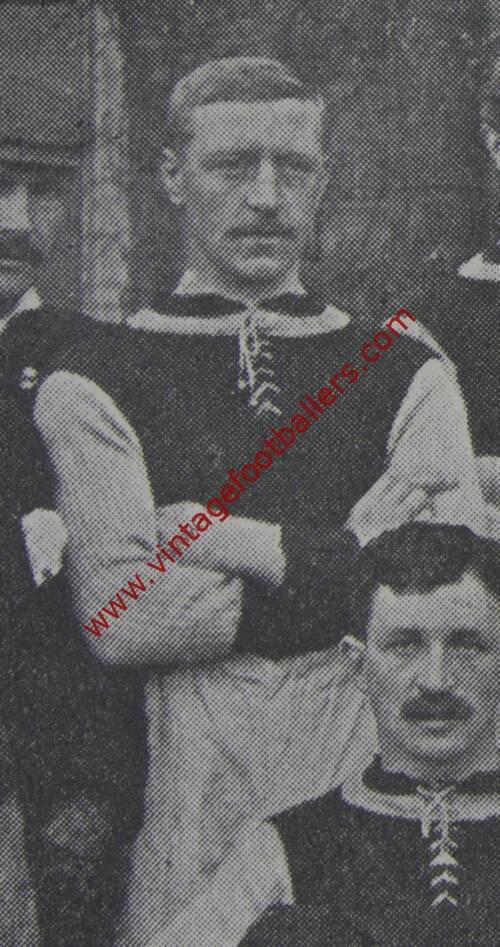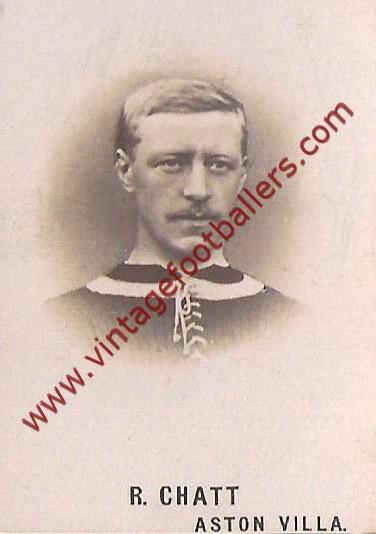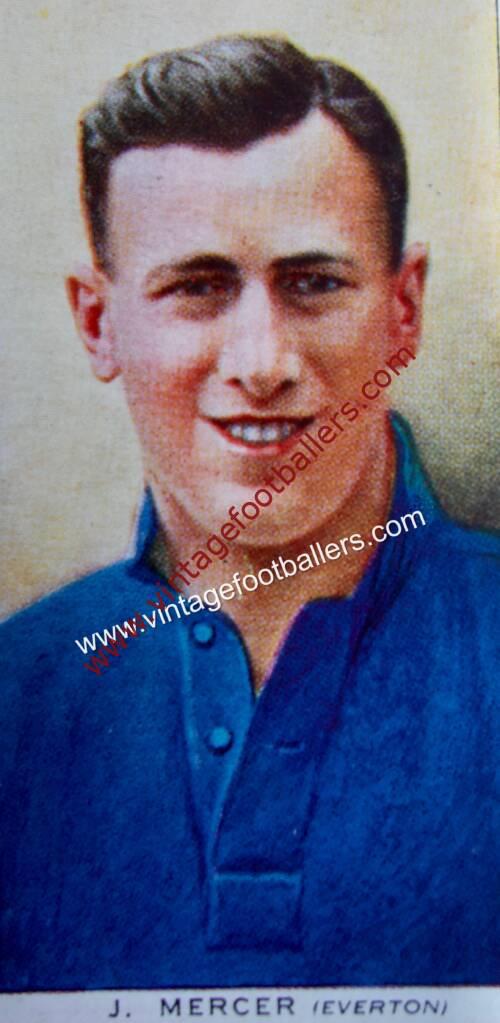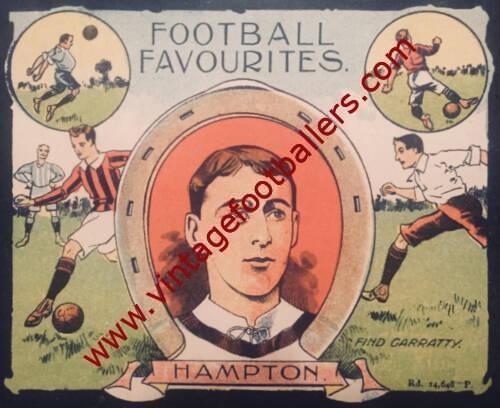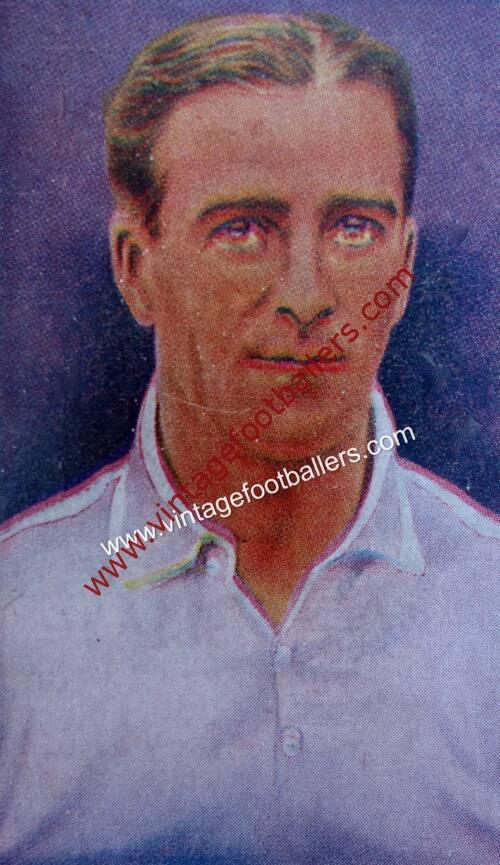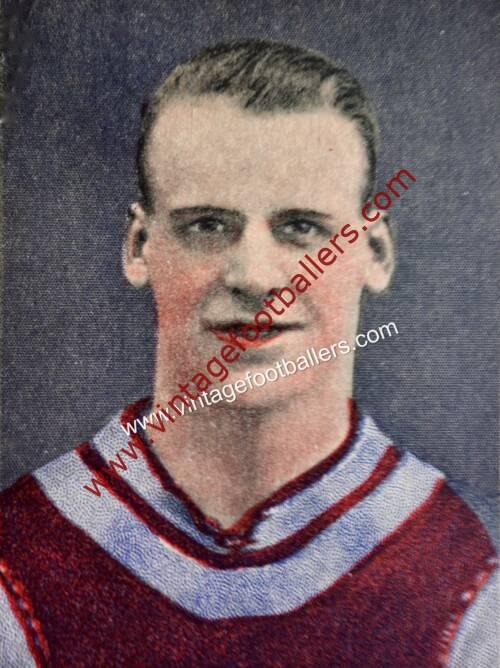Please choose your photo size from the drop down menu below.
If you wish your photo to be framed please select Yes.
Note: 16″x 20″not available in a frame.
Images can also be added to accessories. To order please follow these links
£8.95 – £49.95
Please choose your photo size from the drop down menu below.
If you wish your photo to be framed please select Yes.
Note: 16″x 20″not available in a frame.
Images can also be added to accessories. To order please follow these links
Barnard Castle, County Durham born wing half Bob Chatt played football for Cleator Moor in 1888 and Middlesbrough Ironopolis in 1889 before joining Aston Villa in April 1893 making his Football League debut at Accrington the same month in what was his only outing of the 1892-93 campaign.
In his first full season with Aston Villa, he made seventeen appearances generally playing at left half, from where he scored five goals in League matches and four in the FA Cup. His goals included six scored in a run of two goals per match in three consecutive matches in March 1894 against Sheffield Wednesday, Bolton Wanderers and Blackburn Rovers. At the end of the season, Villa claimed their first League Championship by a margin of six points over Sunderland, having scored 84 goals in 30 games, with only five defeats.
Chatt became a regular member of the side in the 1894-95 season, when he was pushed forward to play as an inside forward, but he had already been called into the England squad in April 1894 for the match with Scotland at Parkhead, however he was a non playing reserve and never won an England cap. Chatt only missed three League games, scoring ten League goals, as Aston Villa finished the season in third place, eight points behind the champions, Sunderland.
In the FA Cup, Villa defeated Nottingham Forest 6-2 in the third round with two goals each from Chatt and Stephen Smith, to set up a semi-final against Sunderland. Two further goals from Smith despatched Sunderland and Villa were in the Final for the third time where they once again met local rivals, West Bromwich Albion, against whom they had played in their two previous Finals, winning 2-0 in 1887 and losing 3-0 in 1892.
The Final was played for the first time at Crystal Palace on 20th April 1895, which was to host the finals for the next twenty years. The weather for the Final was described as “a beautiful spring day”, and consequently the crowd and press were still coming into the ground when the game kicked off. From the kick-off, John Devey, the Villa centre forward, swung the ball out to his inside left, Dennis Hodgetts. Hodgetts’ long cross-pass found Charlie Athersmith on the right, and his centre fell to Chatt who sent the ball goalwards on a half volley.
Albion’s keeper Joe Reader was only able to get his fingers to the shot, and turned the ball across the goal mouth and, after a goalmouth scramble involving Devey and Albion defender Jack Horton, the ball was turned into the net. There are no accurate timings for the goal and different reports time it at between 30 and 39 seconds. At the time, many of the crowd and press missed the goal as they were still taking their seats, and the press reports indicated that Chatt had scored. According to Ward & Griffin in their “Essential History of Aston Villa” however, “after the game, the Villa players confirmed that John Devey had netted after Chatt’s shot had been blocked straight into the latter’s path and had ricocheted off his knee.” Despite this claim, The Football Association still credit the goal to Chatt as having been scored on thirty seconds. Chatt’s record stood for 114 years until beaten by Louis Saha’s effort for Everton after 25 seconds in 2009.
Despite pressure from the Albion forwards, especially from Billy Bassett, Villa were able to hold on to their lead until half-time. In the second half, Villa began to press forward again with Chatt and Devey forcing excellent saves from Joe Reader. Neither side was able to add to the score and Villa won the Cup for the second time.
For the 1895-96 season, Chatt was moved back to centre-half to accommodate Johnny Campbell who had arrived from Celtic during the summer. The season started badly for Villa when they lost the FA Cup – literally. On 11 September the trophy was on display in a football outfitter’s window when the shop was broken into and the trophy, together with some cash, was taken. The trophy was never recovered and Villa were fined £25 by the Football Association. On the pitch, Chatt made 17 appearances in the League, as Villa took the League Championship by four points over Derby County with Campbell top scorer scoring 26 goals. As Philip Gibbons pointed out in “Association Football in Victorian England”: “Aston Villa had twice won the League Championship, as well as the FA Cup, during the three previous seasons, with a team generally acknowledged as the finest in the land.”
The following season Chatt continued at half back but was no longer a regular choice, with Jack Reynolds, James Cowan and Jimmy Crabtree forming a well established half back line. During Villa’s Double winning season, Chatt made eleven League and one FA Cup appearance, scoring a single goal, in a 2-1 victory at Wolverhampton Wanderers on Boxing Day.
Chatt continued in defence for one more season, when Villa finished in a disappointing sixth place, before deciding to retire from professional football in June 1898. In his five years with Villa, Chatt made a total of 94 appearances, scoring 26 goals. He returned to the north east to play for Stockton in 1898, winning the FA Amateur Cup with them in April 1899, then played for South Shields in 1899 and finally Willington Athletic in 1900 before retirement.
| Weight | N/A |
|---|
